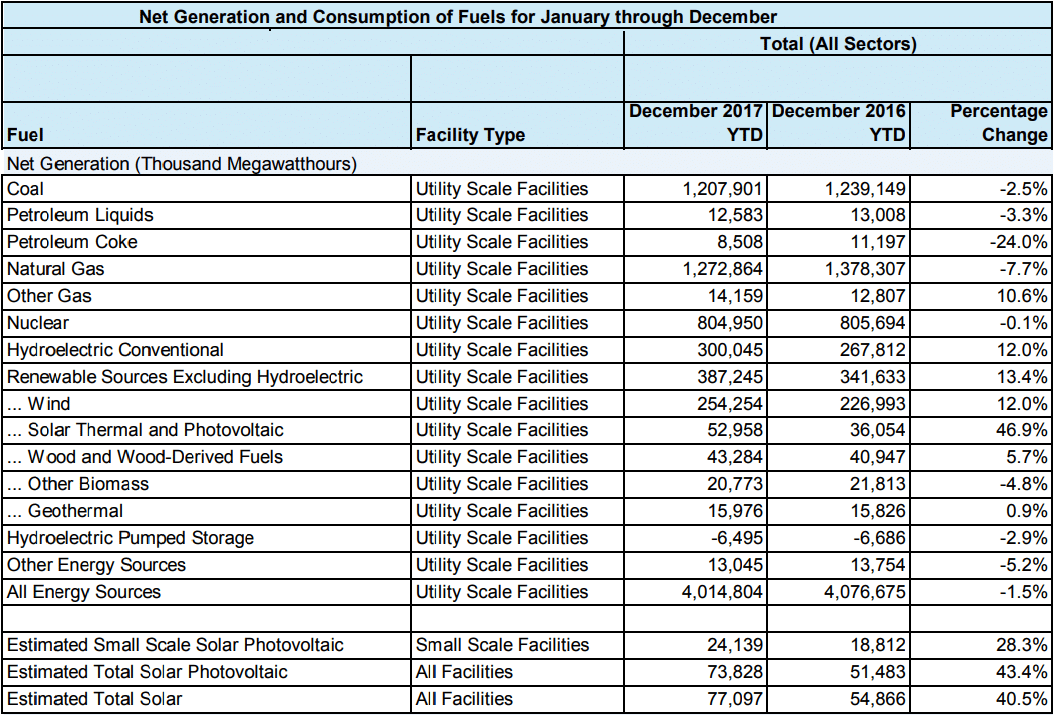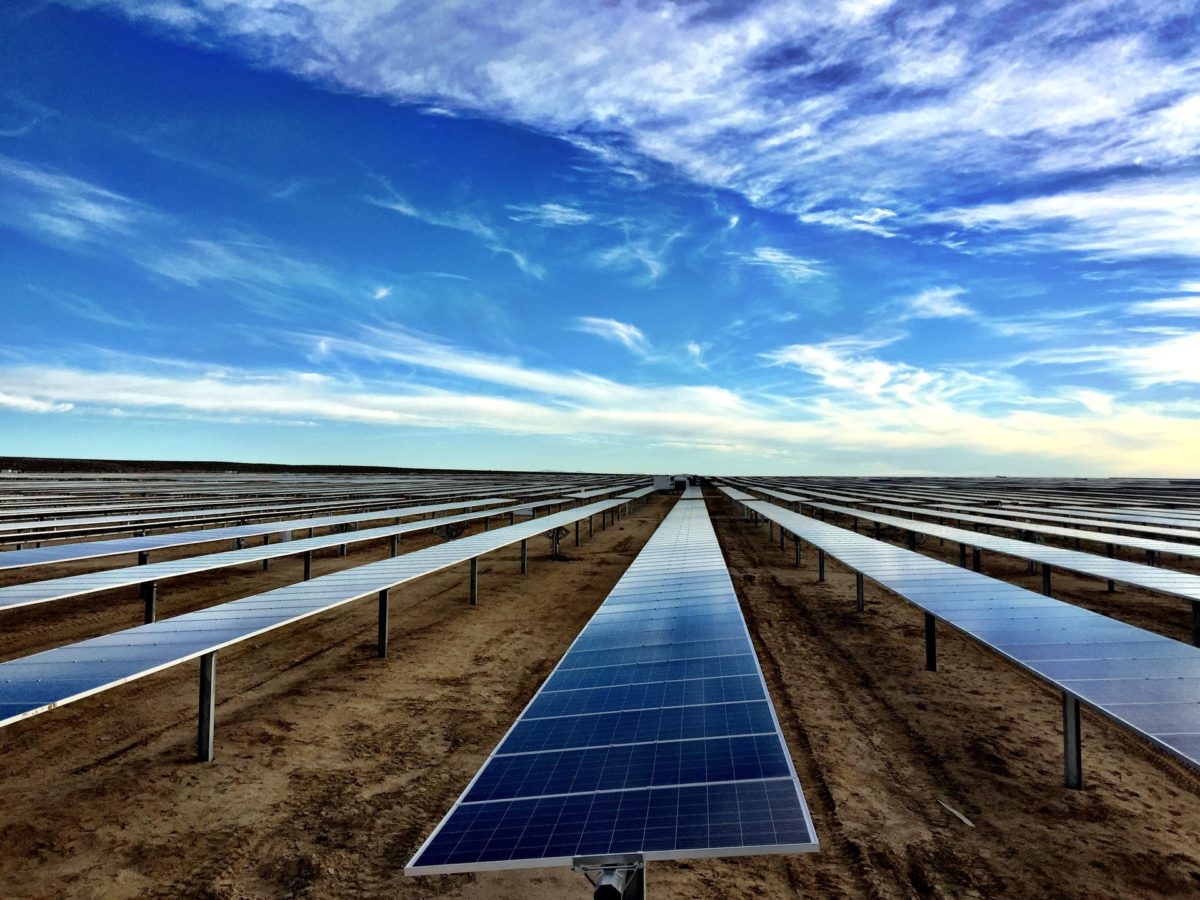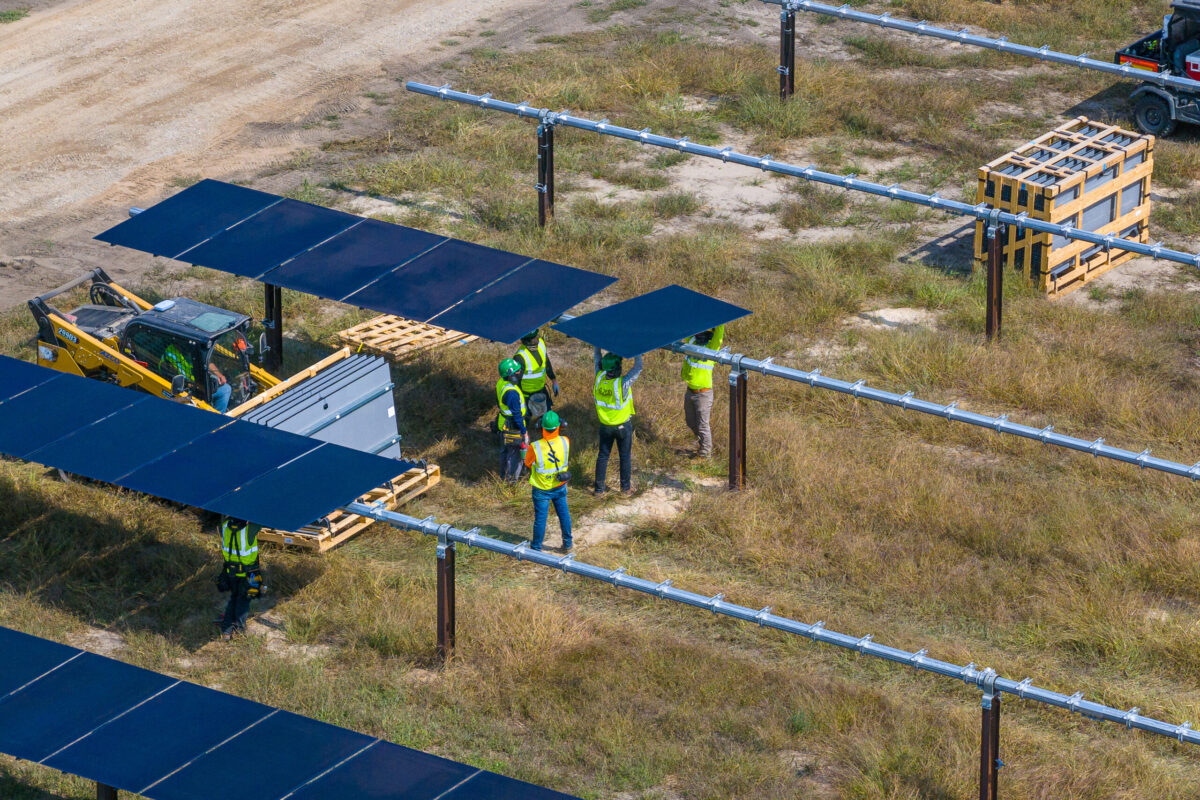The U.S. Department of Energy’s Energy Information Administration (EIA) has released its Electric Power Monthly (PDF) report for February 2018, which includes all data for 2017.
Solar power generation, in all forms and sizes – solar PV greater than and less than 1MW and concentrating solar power (CSP) – grew 40.5% in 2017 over 2016. Utility scale PV solar power stood out among all forms of electricity generation growing 47% in output. CSP production was down 3.4% from 2016 – meaning solar PV actually grew more than 43% on its own.
This massive amount of growth in electricity from sunlight means solar power represented just over 1.9% of all electricity generated in the United States in 2017. With solar power being just under 1% of electricity generated in 2015, we’ve seen solar power generation roughly double over the course of two years.
Four U.S. states saw solar pv electricity break 10% of their total electricity generation – California at 15%, Hawaii at 11.8%, Nevada at 10.8% and Vermont at 11.5%. Additionally, the District of Columbia saw 77% of its total electricity generation come from solar pv.
From the report:

Concurrently with the solar power growth, we saw total electricity generation fall 1.5% versus 2016. Coal fell to less than 30% of the total (and no grandmother hasn’t frozen), and overall – electricity from fossil fuels was down 5.3%!
Wind and solar together totaled 8.2% of generation – more than hydropower. While growth in total CO2 free electricity was strong, growth was almost all in solar+wind+hydroelectricity.
37.5% of all electricity came from CO2 free sources – more than 7% growth over 2016. Of that CO2 free electricity, nuclear power still makes up more than half, however nuclear power generation was flat. The 13% growth from hydroelectricity is not going to happen again, as the heavy California rains in the first months of 2017 haven’t repeated themselves and contraction in hydro generation is expected in 2018.
No source of power is growing as quickly as solar. If the roughly 40% growth rate of solar power from 2016 to 2017 continues for the next three years, the U.S. will be getting more than 5% of its electricity from solar in 2020.
Part of the reason for this massive amount of growth seen in 2017 is an artifact of the construction timetables of solar power, including a year-end boom in most years. Combined with the massive 2016 installation volume of 14.6GW, solar generation saw an unusually high boost in 2017. This is not likely to be repeated in 2018, as 2017 installation volume has been more consistent through the year and the total volume was smaller.
It is clear that the U.S. economy has decoupled GDP growth from electricity usage and CO2 growth. It’s estimated that the U.S. economy grew 2.3%, while total electricity usage fell 1.5% – and total CO2 generation is projected to be flat, or declining, despite ongoing growth in population and GDP.
This content is protected by copyright and may not be reused. If you want to cooperate with us and would like to reuse some of our content, please contact: editors@pv-magazine.com.








By submitting this form you agree to pv magazine using your data for the purposes of publishing your comment.
Your personal data will only be disclosed or otherwise transmitted to third parties for the purposes of spam filtering or if this is necessary for technical maintenance of the website. Any other transfer to third parties will not take place unless this is justified on the basis of applicable data protection regulations or if pv magazine is legally obliged to do so.
You may revoke this consent at any time with effect for the future, in which case your personal data will be deleted immediately. Otherwise, your data will be deleted if pv magazine has processed your request or the purpose of data storage is fulfilled.
Further information on data privacy can be found in our Data Protection Policy.